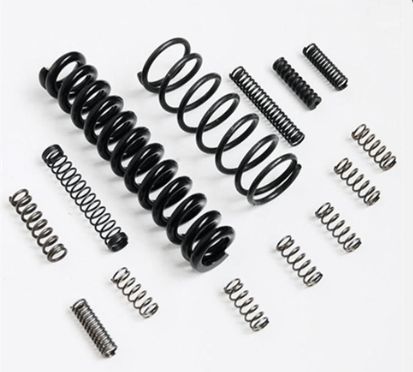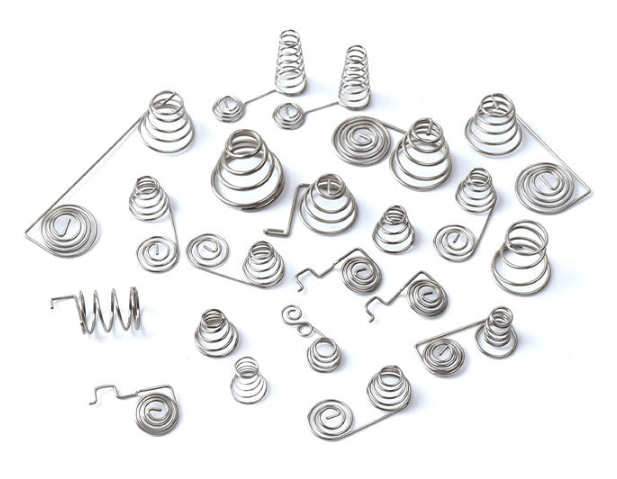Surface treatment is a crucial aspect of spring manufacturing, aimed at preserving and protecting these vital components. Springs are often exposed to challenging environmental conditions, making it essential to employ protective layers. These protective layers of springs can be categorized into metal protective layers, chemical protective layers, and non-metallic protective layers, each chosen based on the specific needs of the application.

Metal Protective Layers for Springs
One common method of providing protection to springs is by applying a metal protective layer. Among the various techniques available, electroplating is a widely used method for obtaining a metal protective layer. Two of the most prevalent options in this category are galvanization and cadmium plating.
Non-Metallic Protection for Springs
Non-metallic protective layers are applied by dipping or spraying substances such as asphalt or paint onto the spring's surface. These layers serve as a barrier against environmental factors, safeguarding the spring from corrosion and other forms of degradation.
Chemical Protection of Springs
Chemical protection involves creating a dense protective film on the spring's surface through processes like oxidation treatment or phosphating. This film acts as a shield against corrosion and extends the spring's lifespan. Both oxidation treatment and phosphating are cost-effective methods, with oxidation treatment being the preferred choice among Spring manufacturers.
Oxidation Treatment of Springs
Oxidation treatment, also known as bluing or blackening, results in the formation of a protective magnetic iron oxide layer on the spring's surface. The color of this oxide film can vary, ranging from blue and black to dark brown. The specific hue depends on factors like the oxidation process, the spring's surface condition, and its chemical composition.
Methods of Oxidation Treatment
Oxidation treatment encompasses various methods, including alkaline oxidation, alkali-free oxidation, and electrolytic oxidation. In most cases, alkaline oxidation is the method of choice. However, it's important to exercise caution during oxidation treatment, as it can erode surface grain boundaries, potentially reducing fatigue strength.
The Process of Alkaline Oxidation
Alkaline oxidation involves immersing the spring in a sodium hydroxide solution at approximately 140°C for a specified duration. During this process, the oxidant and sodium hydroxide react with iron to produce Na2FeO2 and Na2Fe2O4, ultimately forming the protective magnetic iron oxide. The thickness of the oxide film typically ranges from 0.6 to 2 μm. Factors affecting corrosion resistance include oxide film compactness, thickness, oxidant concentration, sodium hydroxide concentration, and solution temperature.
Phosphating Treatment of Springs
Phosphating treatment entails immersing the spring in a phosphate solution containing manganese, iron, and zinc to create a water-insoluble phosphate film on the metal surface. The resulting film appears dark gray, gray, or dark gray, imparting a dull finish. Generally, the thickness of the phosphating film ranges from 5 to 20 μm.

Precautions for Phosphating Treatment
Several precautions should be taken during phosphating treatment:
Phosphating films possess microporous structures, making them ideal for paint and grease adhesion. Hence, phosphating is often combined with coating methods like painting.
Phosphating films can withstand high temperatures (400~500℃), making them suitable for springs operating in elevated temperature environments.
Springs should be sandblasted before phosphating. Immediate phosphating after sandblasting is recommended. If sandblasting equipment is unavailable, chemical degreasing and pickling can be used to remove oil.
Phosphating processes produce hydrogen, which can lead to hydrogen embrittlement in critical parts of the spring. Dehydrogenation treatment is essential after phosphating to mitigate this risk.







